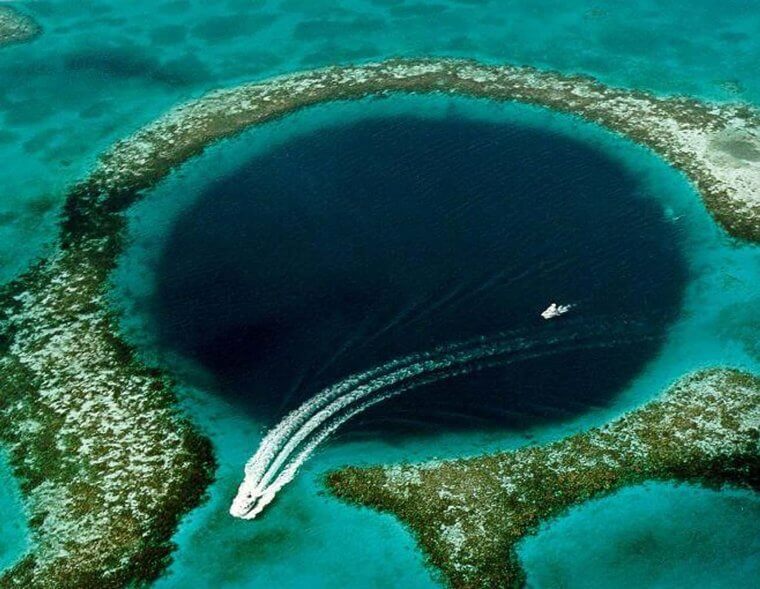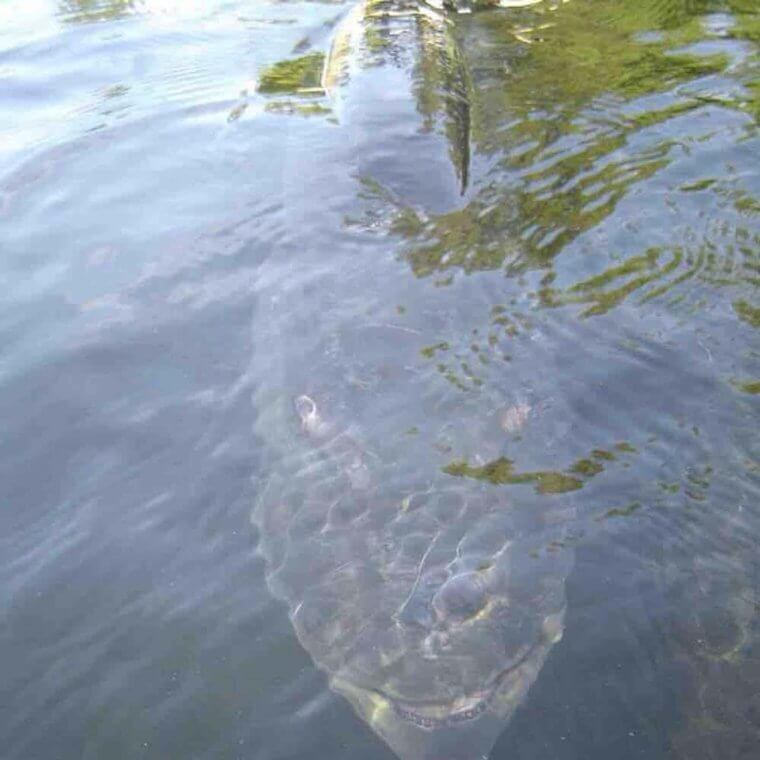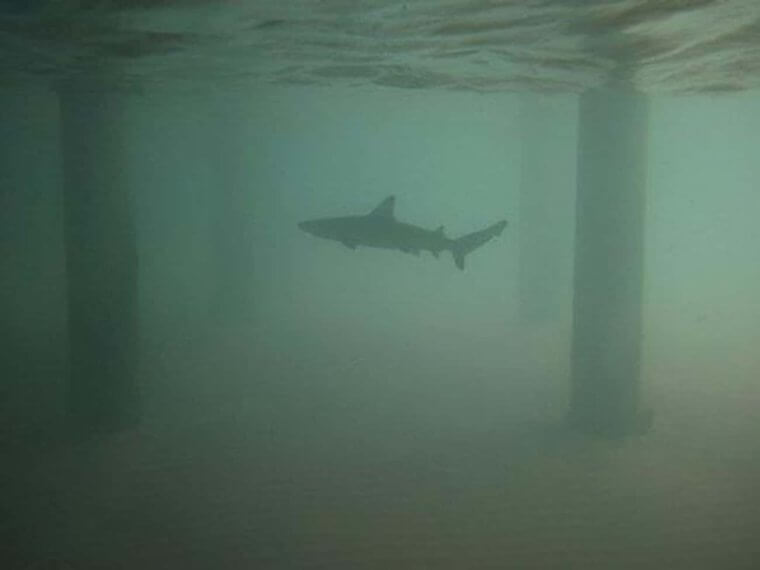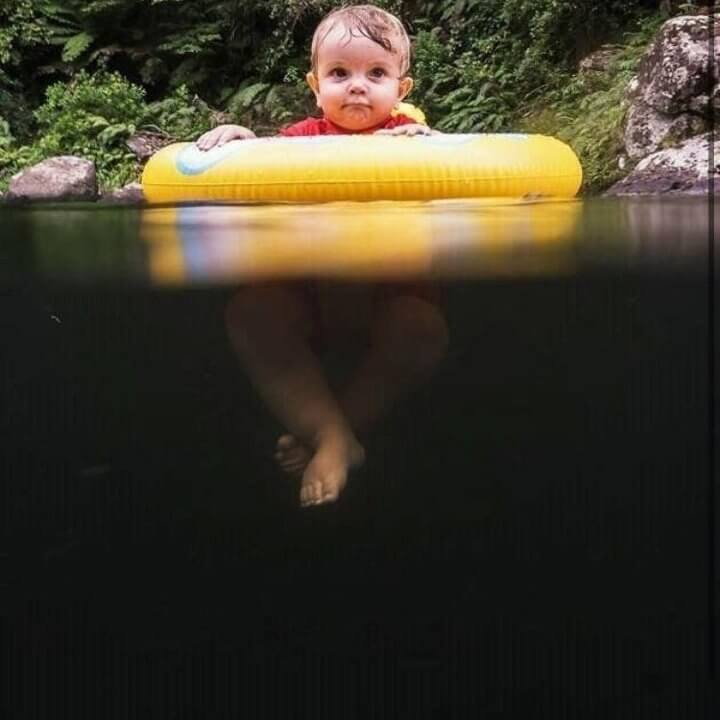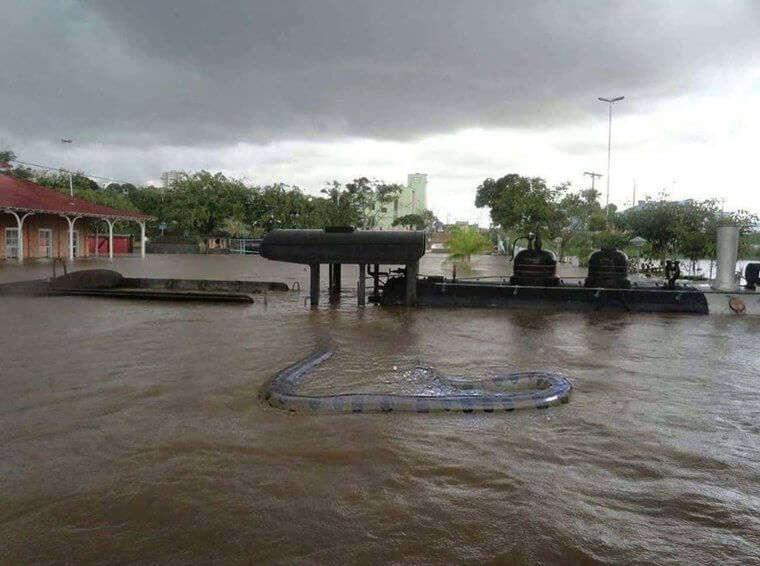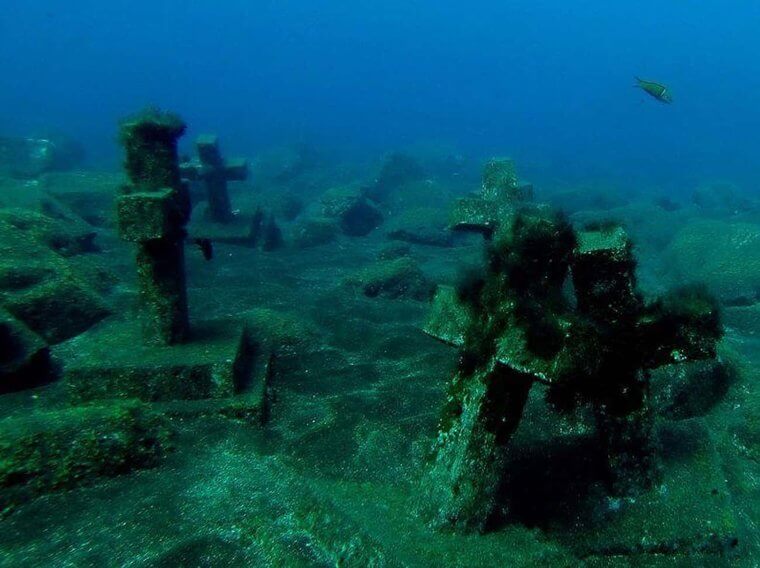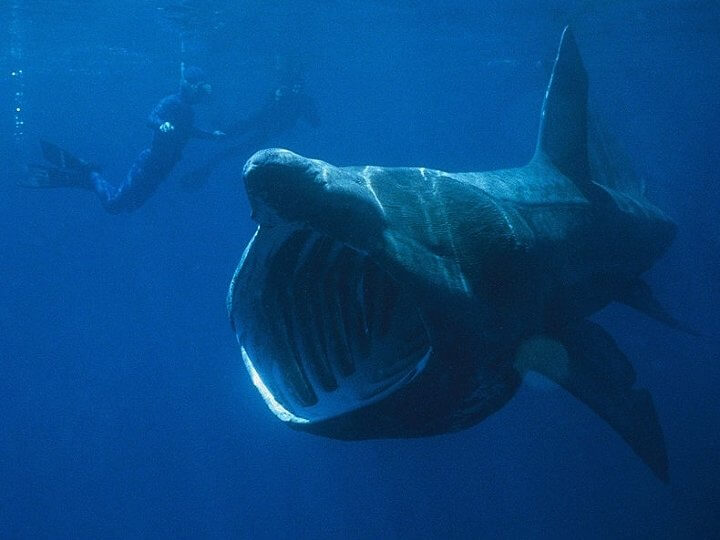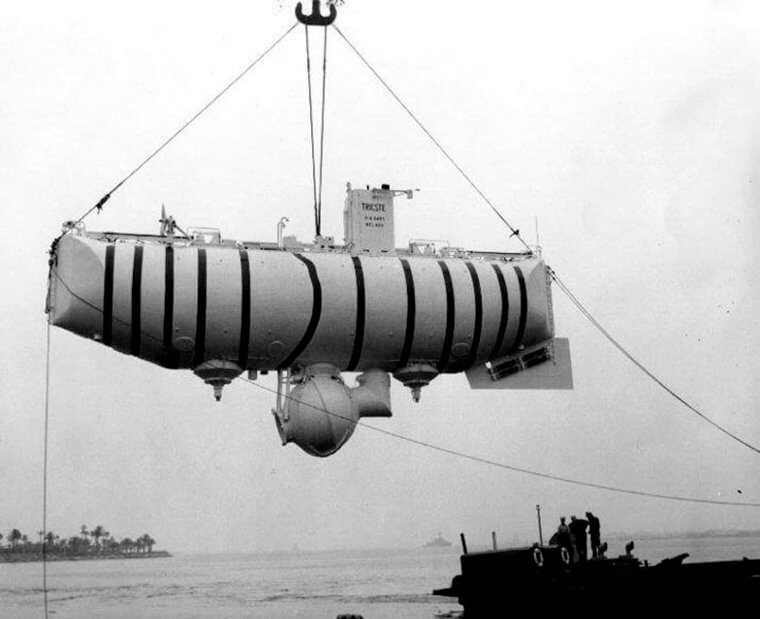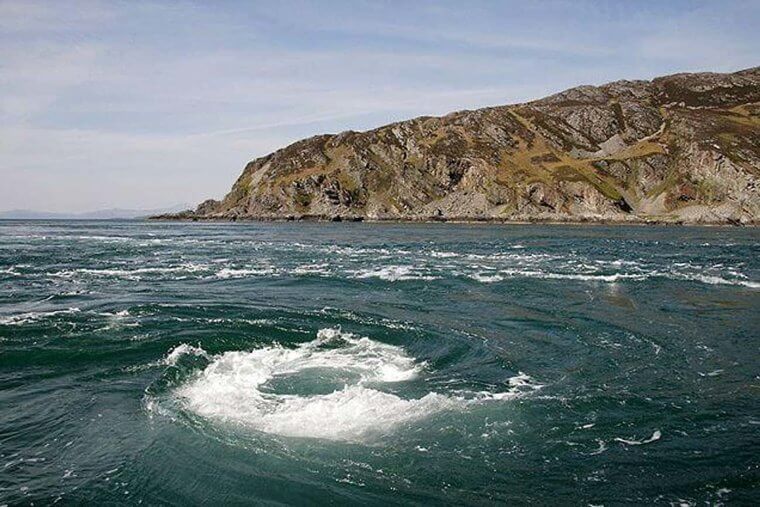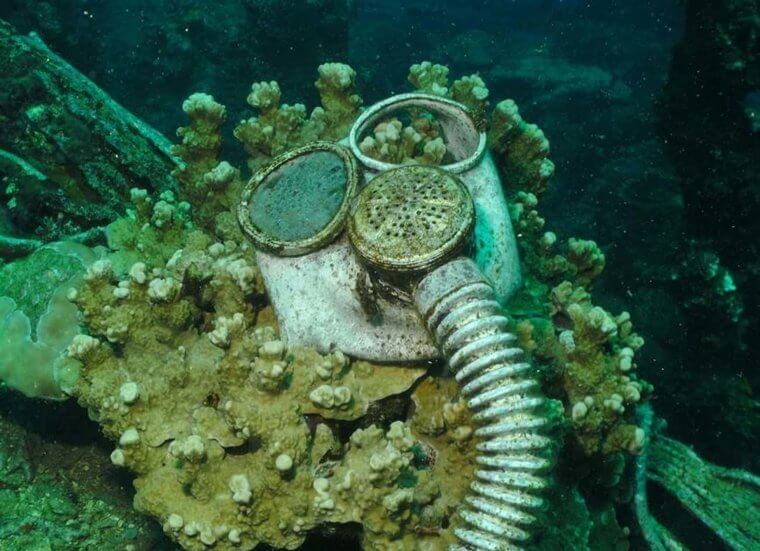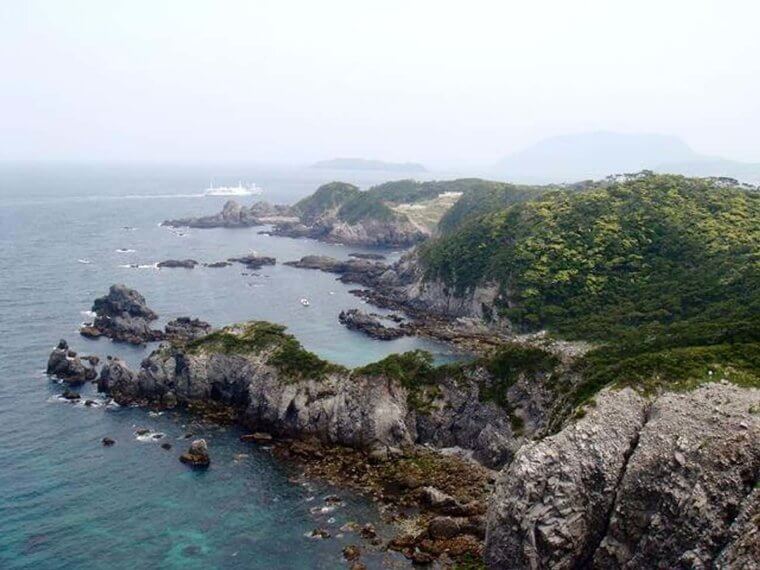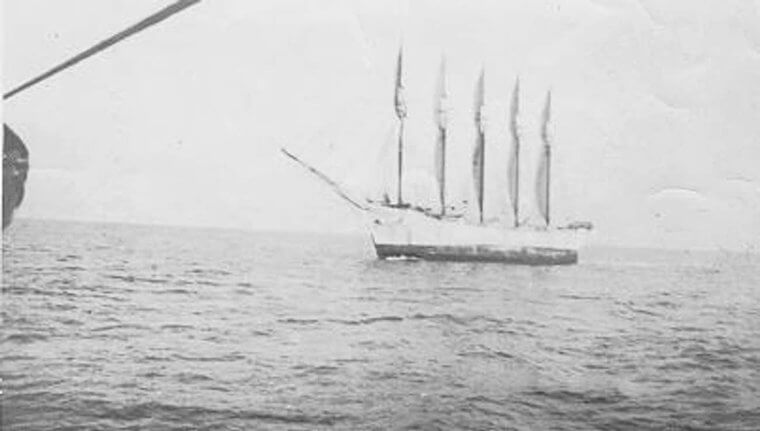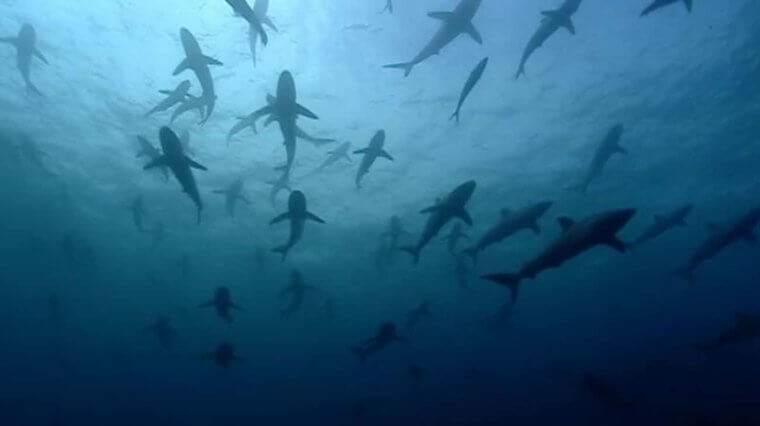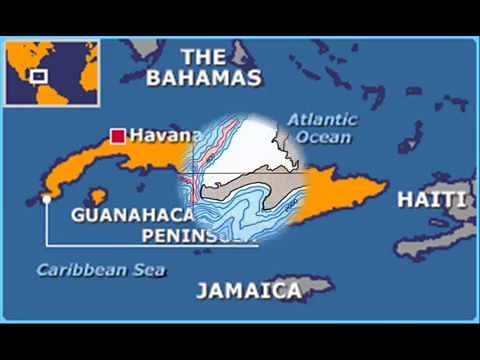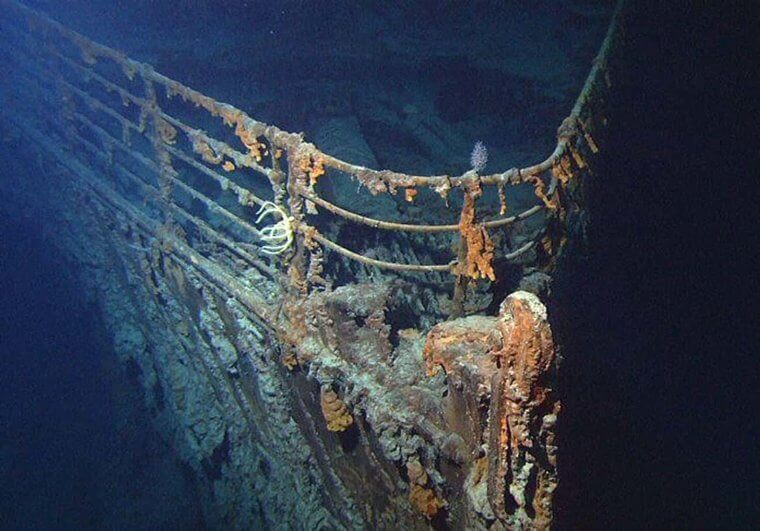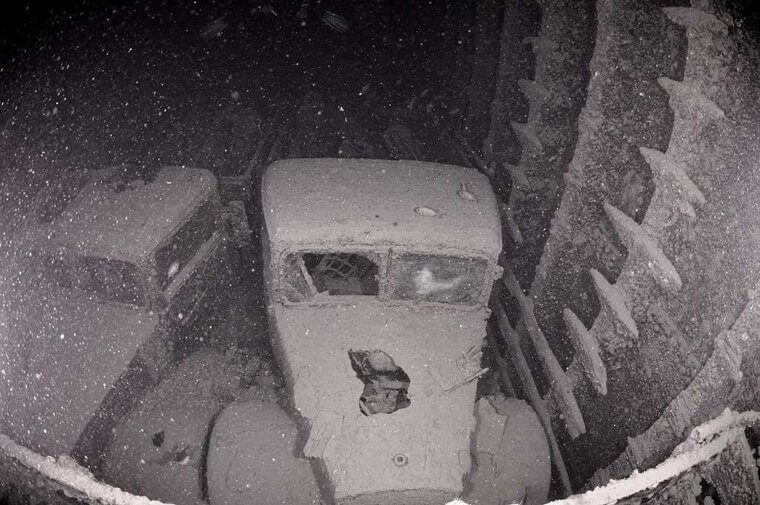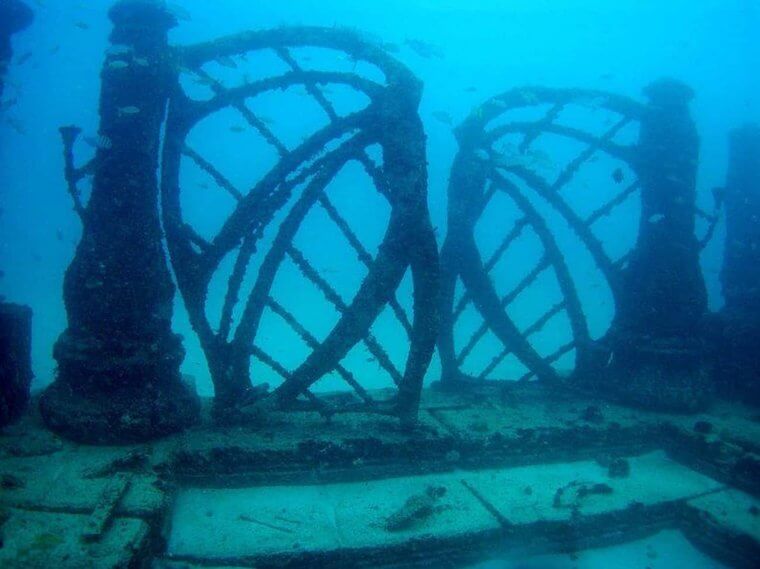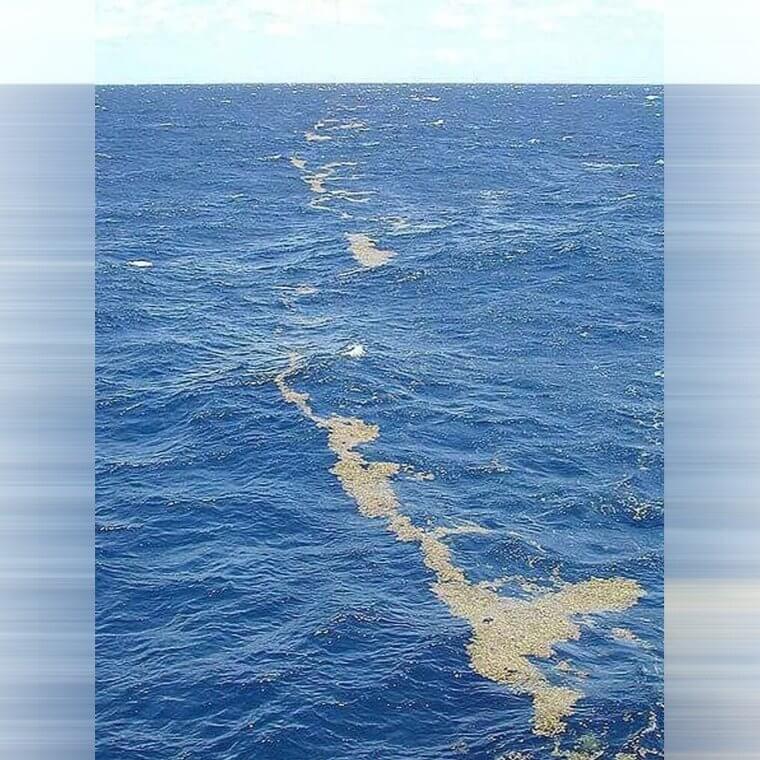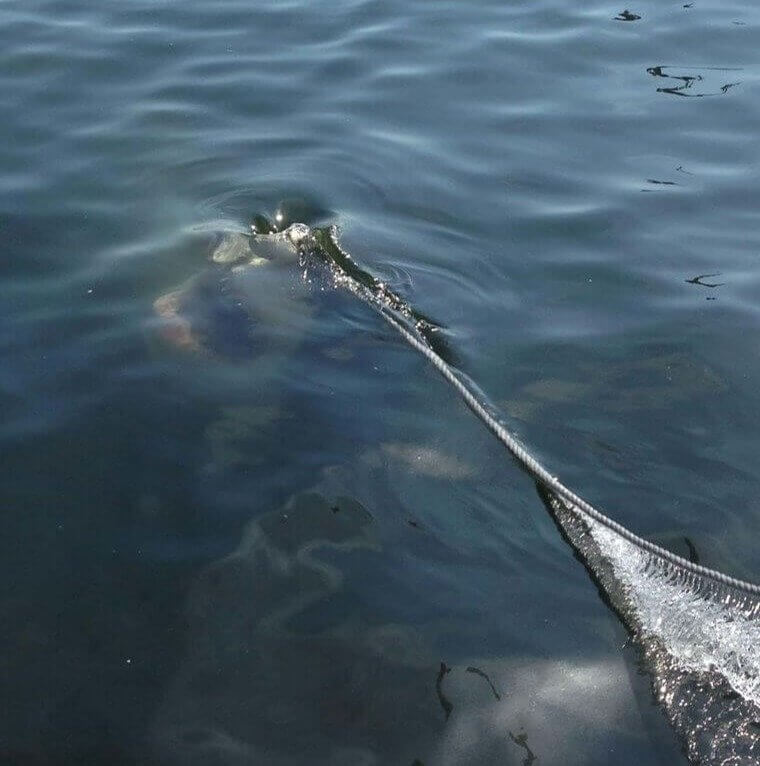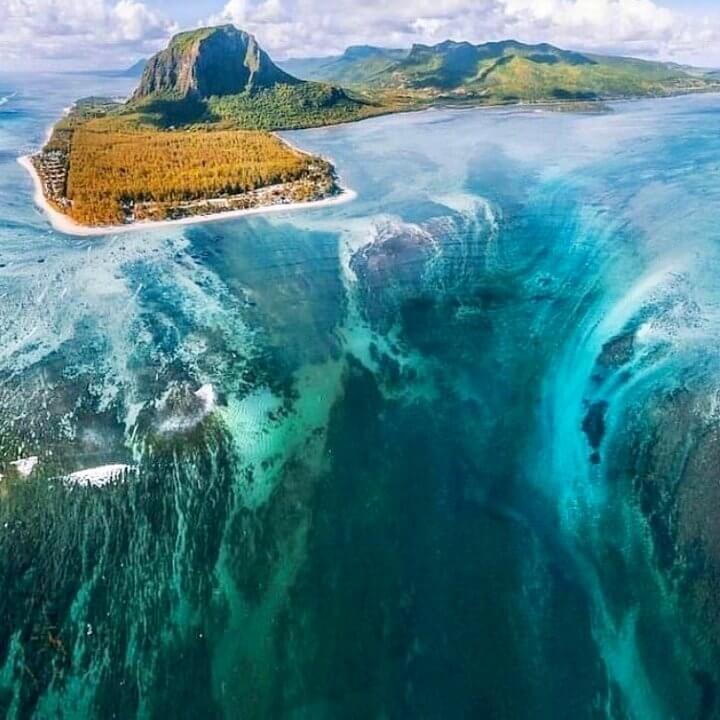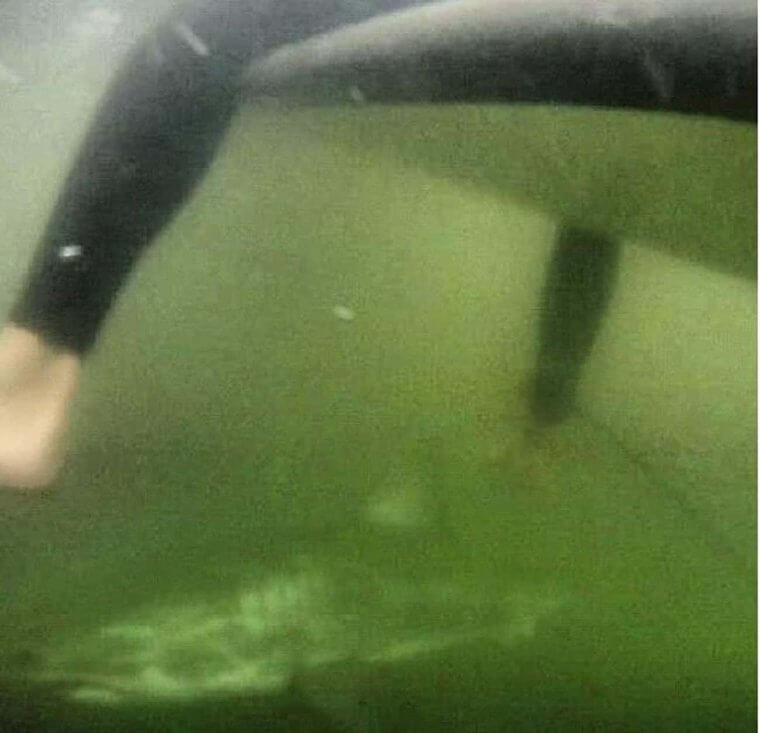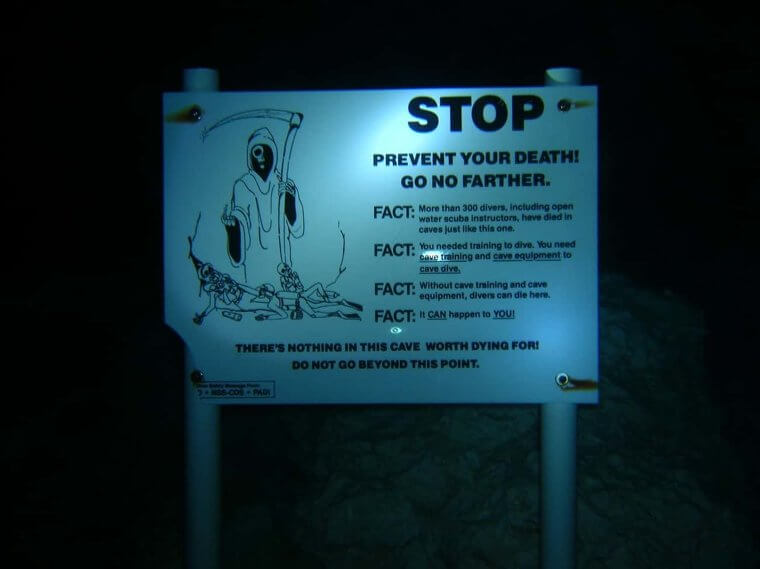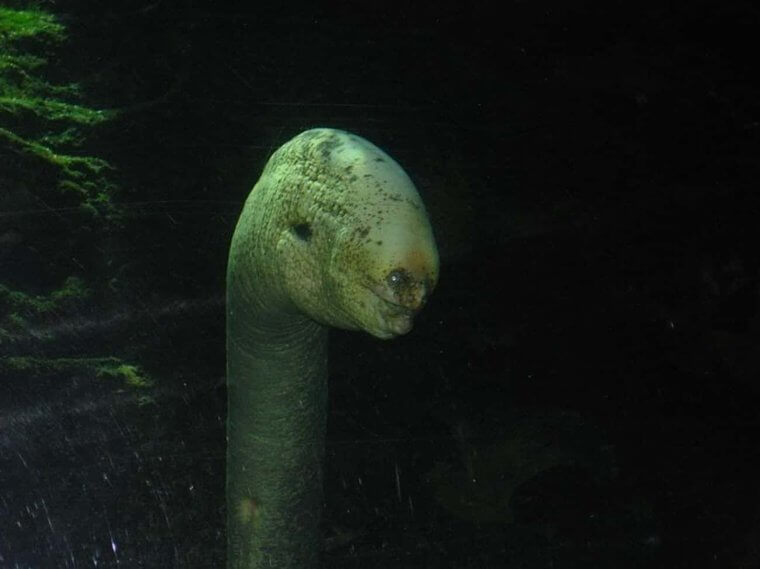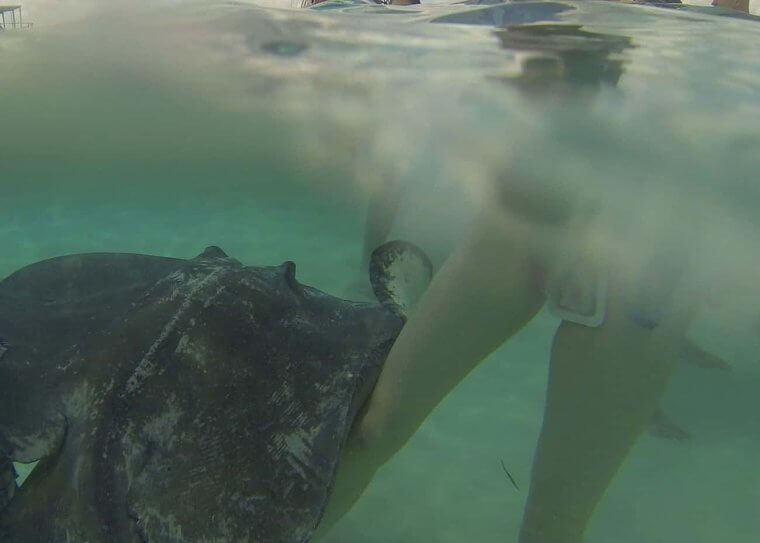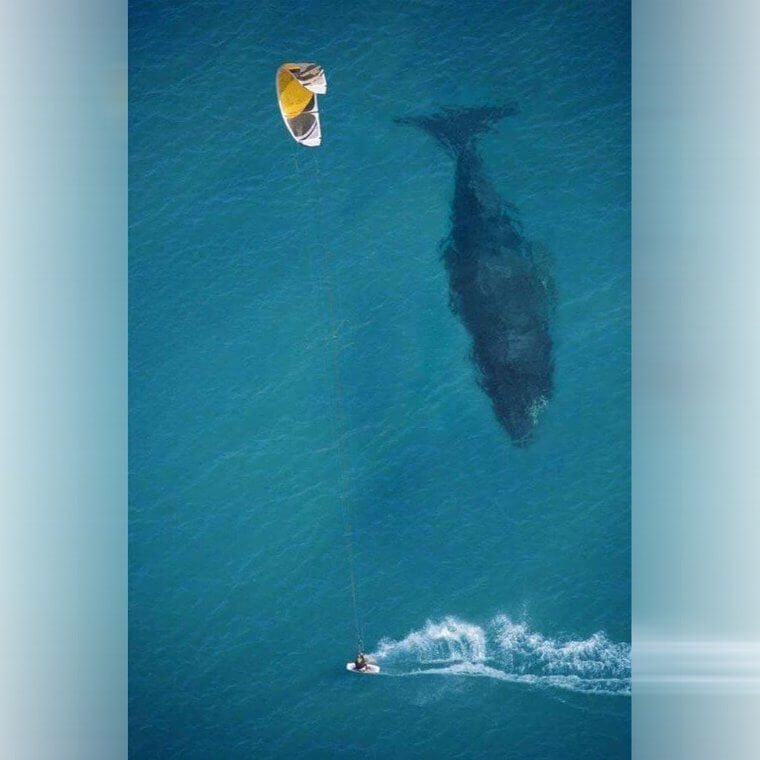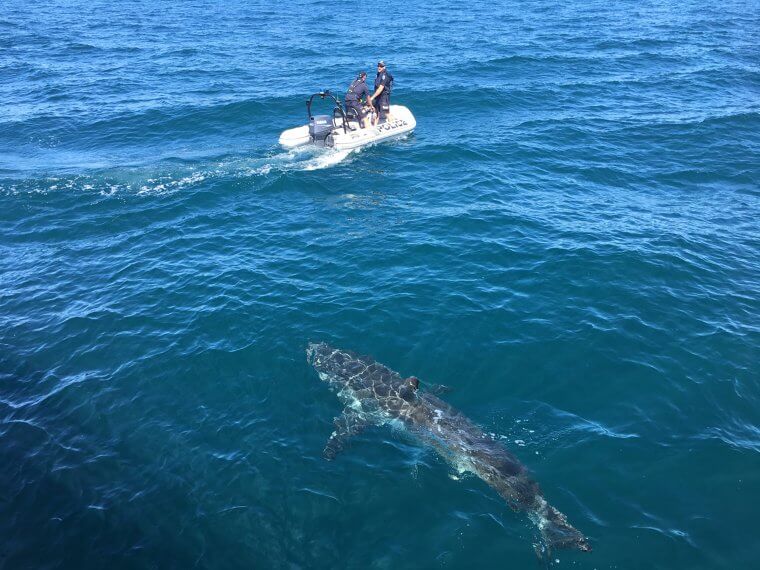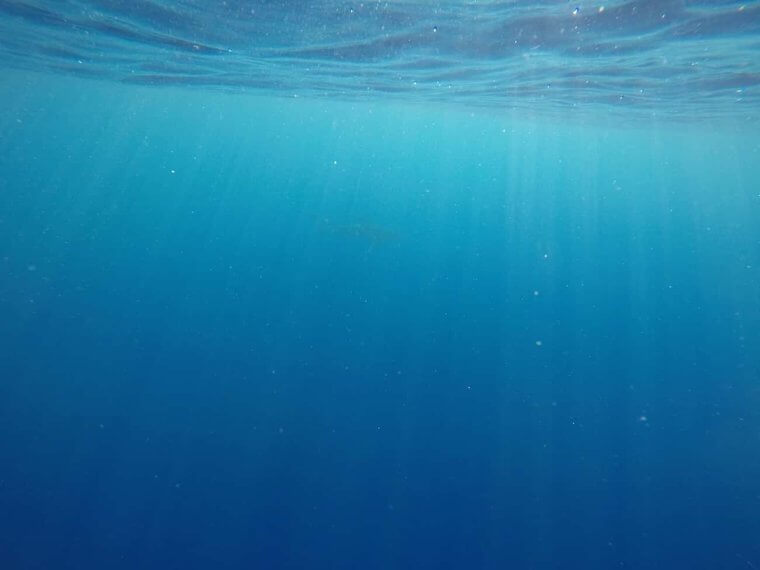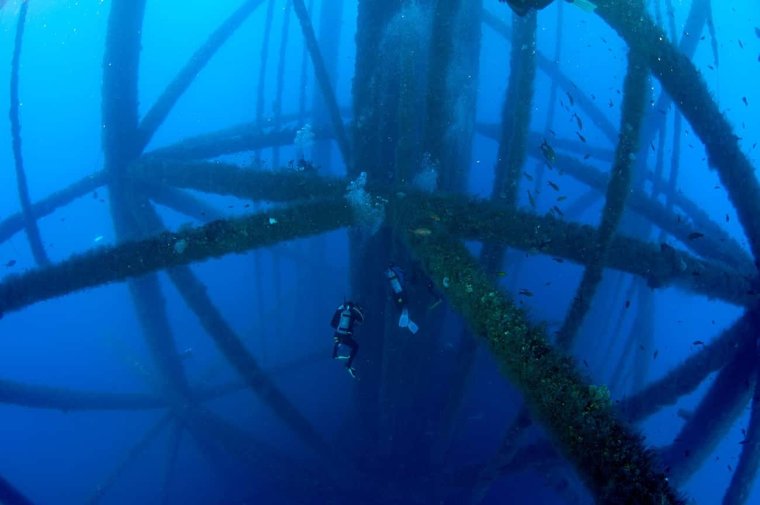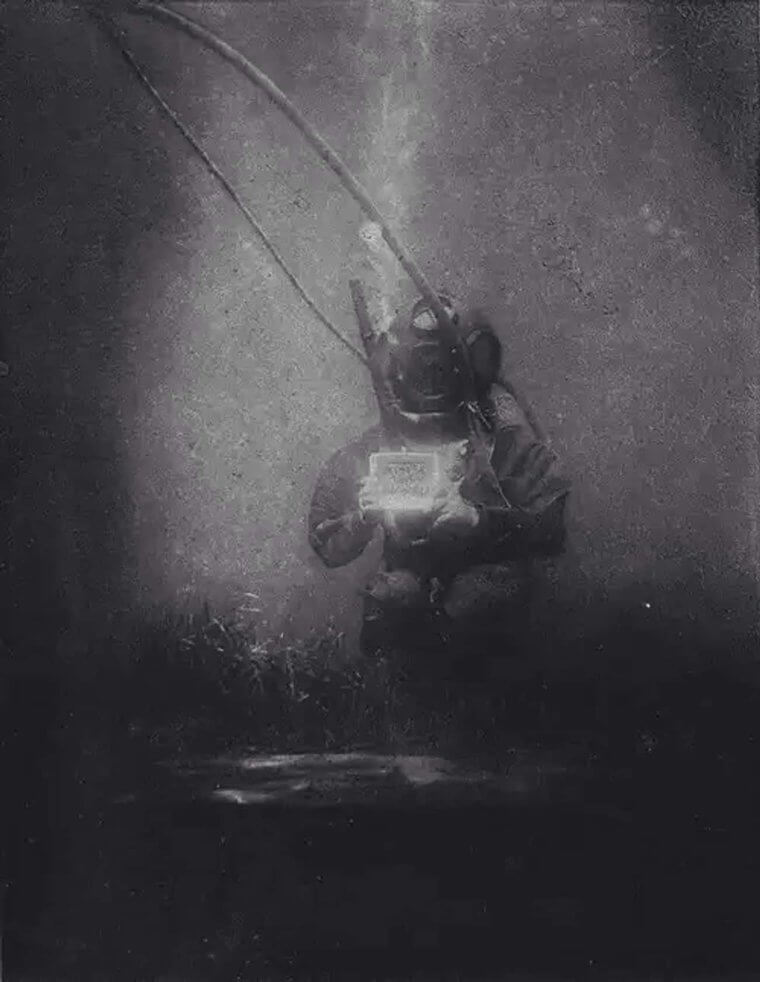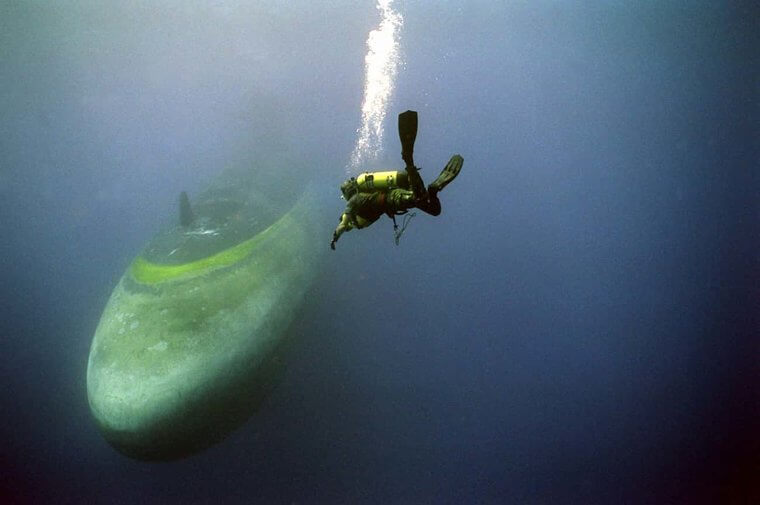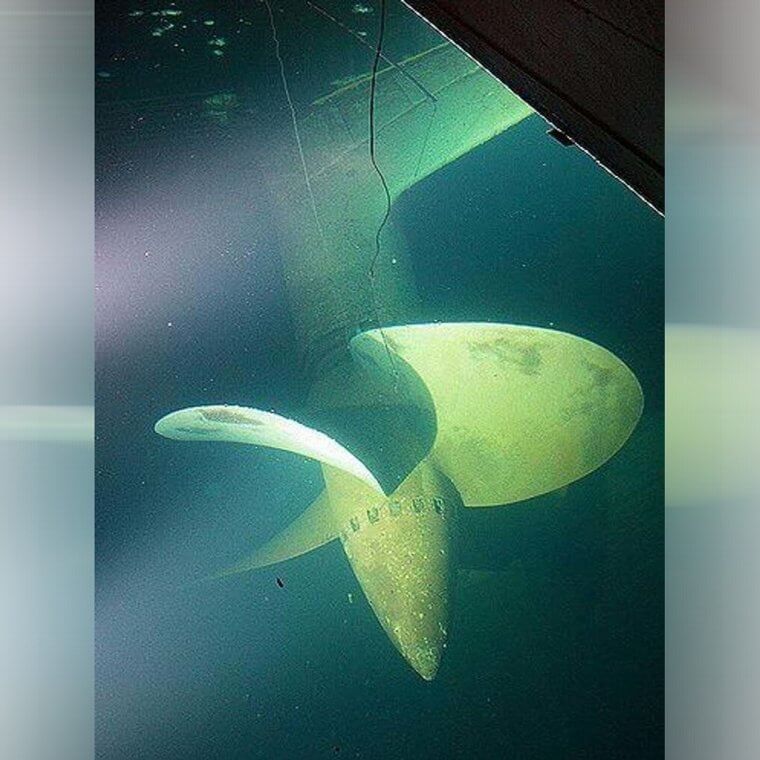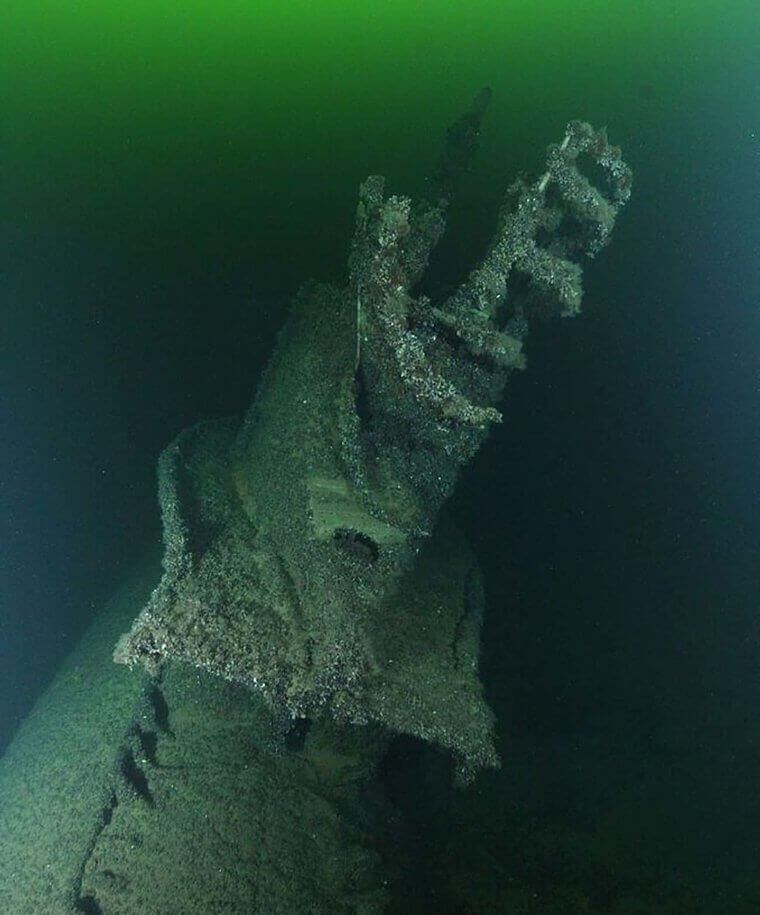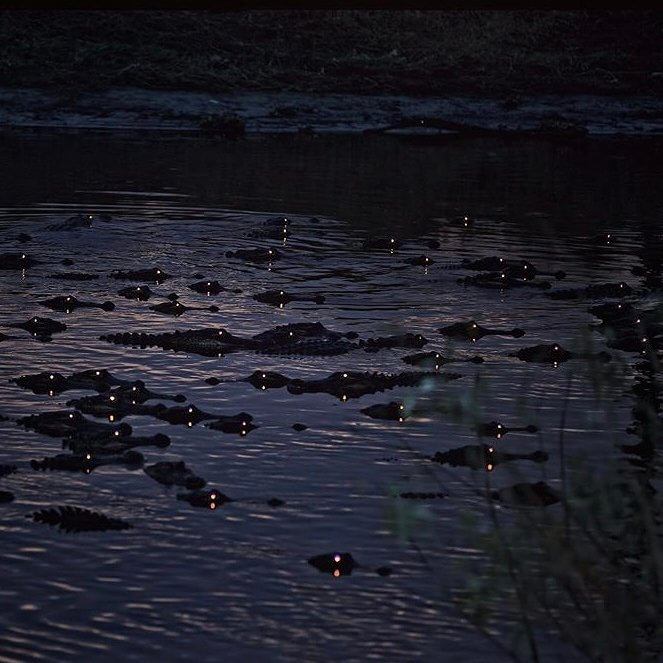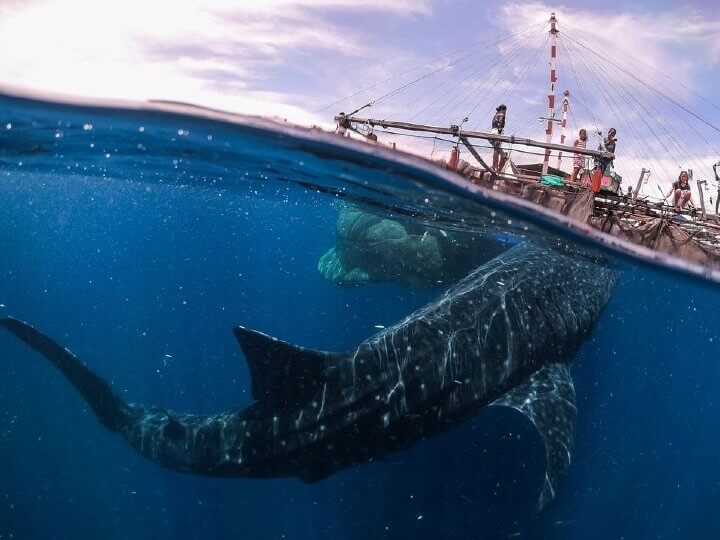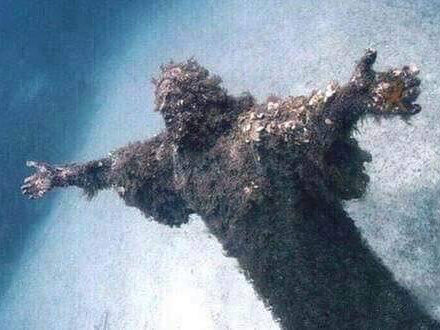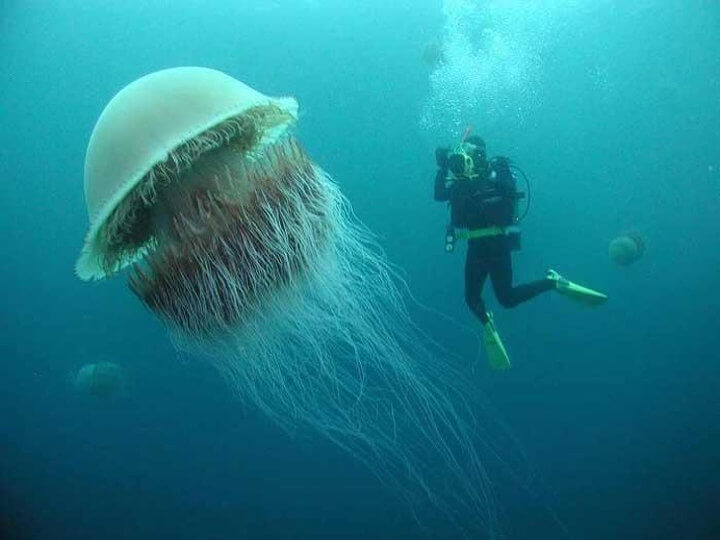The Great Blue Hole Is An Entrance To Hell
The Great Blue Hole is a sea-hole or vertical cave that lies off Belize's Lighthouse Reef. It was actually formed on dry land during a past ice age when the sea levels were much lower. The ground collapsed due to water dissolving limestone, et voila! Your very own entrance to an underwater hell. The name comes from the striking contrast in colors between the shallow, coral edge and the seemingly bottomless center.
Believe it or not, The Great Blue Hole doesn't win the prize for the most obviously named place in the world. That honor goes to Australia's Great Sandy Desert!
The Deepest Man On Earth
What possesses these people to climb mountains and deep-sea dive? They're all crazy! Another unbelievable pastime is freediving. People with really big lungs dive far down in the ocean on a single breath of air.... without oxygen tanks. The current freediving world record champion and "the deepest man on earth" is Herbert Nitsch. No relation to Friedrich Nietzsche, who was deep in a philosophical way.
Herbert Nitsch has dived to a depth of 702 feet or 214 meters. What makes it even weirder is that he's from Austria, which is a completely landlocked country. So where did he learn to swim?
Come On In, The Water Is Lovely
If you're planning on going skinnydipping, you better look before you leap and check what lies beneath the surface. At first glance, this beast looks like a crocodile, but the shape of the mouth is wrong, and the body is too smooth. Upon further investigation, it doesn't look like a fish either, as it doesn't have a dorsal fin. So, we reckon it might be a blooming big eel or worse––a blooming big snake.
But photographer and fisherman Mark A Johnson confirms the creature is, in fact, a pike. The prehistoric-looking, spiky-toothed predators can grow up to 55 lbs (25 kg), and while not a croc, they could definitely take off a finger!
Pier-Reviewed Shark Facts
Despite our fears of deep, open water, did you know that most shark attacks occur in shallow water? This shark seems to be happily swimming along under a pier in what looks to be about ten or twelve feet of water. According to Florida's Museum of Natural History, surfers and swimmers most commonly get attacked in six to ten feet of water but shark attacks can occur in less than three feet of water.
That said, most shark activity tends to happen a few hundred yards from shore, meaning you should always stay alert even if you're only swimming in thigh-deep water. Not to scare you or anything!
What Lies Beneath
In one of the scariest photos on this list, this tiny tot is totally oblivious to the terrors that may be lurking beneath him. Just one foot below his feet, the water goes from murky green to jet black, meaning anything could be lurking down there. Below his tiny feet - there could be any number of sharks, alligators, giant squid, eels, sunken submarines, and who knows what else.
Luckily, this baby hasn't learned the meaning of the word fear yet. To him, he's blissfully swimming around in the void, probably happy thinking he's back in the womb.
Get This Mother****ing Snake Off My Mother****ing Porch!
Okay, so this isn't fear of the ocean, but it's scary enough to warrant a place on our list. If you've ever been caught in a flood, you'll know they can be destructive enough on their own. But when the world's largest snake swims up to your front door, you're in all kinds of trouble! We're not sure where this photo is from, but Anacondas inhabit the Amazon and South America.
The largest specimen ever recorded was 27 feet (8.43 meters) long, with a girth of three and a half feet (1.11 meters), and weighed in at a whopping 227 kg. Top Tip: Never feed an Anaconda as they might get a crush on you!
Underwater Memorial For Missionaries Murdered By Pirates
Las Cruces de Malpique is an underwater memorial for Jesuit missionaries killed by Pirates in the 16th century. The spooky site of 40 stone crosses lies at the bottom of the sea off the coast of La Palma in the Canary Islands. It might look like an ancient graveyard but the gravestones were actually dropped to the bottom of the Atlantic to honor 40 missionaries murdered by pirates much more recently.
In 2000, locals drowned one cross for each monk to honor the martyrs. So if the ocean floor wasn't spooky enough for you, now it's a graveyard, too! Do you think scuba divers whistle for good luck when they swim past it?
Basking In The Glory
Clocking in at number two, the Basking Shark is the second-largest living shark (and fish) after the Whale Shark. And just like their prettier cousin, the Whale Shark, Basking Sharks feed on zooplankton by sucking in immense quantities of water which they then filter out through their gills as the plankton is digested. But that doesn't make this photo and that giant mouth any less scary. Just look at the size of that mouth!
Reaching 26 feet (8 meters) they aren't the quickest of creatures, meaning if this diver got in this Basking Shark's way, they'd be swallowed in one big gulp!
Journey To The Bottom Of The Mariana Trench
With this photo here, we're going to throw you in at the deep end. Quite literally. The Mariana Trench in the western Pacific Ocean is the deepest oceanic trench on Earth, and it measures 2,500 km by 69 km. But that's not the scary part. The scary part is that the bottom of it lies 6.83 miles (10.99 kilometers) down. That's deeper than Mount Everest as high or 25 Empire State Buildings!
Humankind has explored more of the surface of the moon than the ocean floor, meaning we don't know what's down there! Only three people have ever been to the bottom of The Mariana Trench. Terminator director James Cameron is one of them. Hopefully, he said, "I'll be back" before he set off!
The Corryvreckan Maelstrom Is An Infinite, Violent Whirlpool
The Gulf of Corryvreckan is a narrow strait between the islands of Jura and Scarba off the west coast of Scotland. If you travel there, you can visit the third strongest whirlpool in the world, known as The Corryvreckan Maelstrom. A giant rock pinnacle causes this permanent, powerful, donut-shaped vortex under the sea, which rises up to 95 feet below the surface and causes the water to eddy on the surface.
With the right wind and strong Atlantic currents, The Corryvreckan Maelstrom can produce standing waves of 15 feet high. And trust us, you donut want to be around when that happens!
Remains Of A WW2 Battle Lie at the Bottom Of Chuuk Lagoon
If you go down to the bottom of the Chuuk Lagoon, aka Truck Atoll, you're in for a big surprise. You see, the lagoon served as Japan’s main military base in the South Pacific during World War 2. Dive the azure blue waters nowadays, and you'll see several hundred aircraft and warships that were sunk during a major American attack during Operation Hailstone in 1944. But that's not the scary thing...
If you scuba among the ruined ships and planes, you might be lucky enough to be greeted by the skulls and skeletons of the ill-fated soldiers who died in the attacks.
The Devil’s Sea Is The Bermuda Triangle’s Twin
Everyone's heard of the Bermuda Triangle, but did you know it has an equally deadly twin on the other side of the world? The Devil’s Sea lies in the Pacific Ocean off the coast of Tokyo. Like its Atlantic sibling, this area is well known for mysterious disappearances and shipwrecks, including the MV Derbyshire. At twice the size of the Titanic, the ore-bulk-oil combination carrier was the biggest ship ever lost at sea!
Ancient peoples from the area believed a huge dragon lived under the sea and pulled down ships to feed on sailors. If that's not spooky enough, ghost ships have also been seen sailing The Devils Sea.
The Bermuda Triangle
You've probably heard of the Bermuda Triangle before. This spooky three-sided oceanic area that links Florida, Puerto Rico, and Bermuda has remained one of the biggest mysteries in history. For centuries, ships that have sailed through the triangular area have vanished without a trace. And if you think you can beat your fear of water by flying over the area, you're not even safe then. Many aircraft have also mysteriously disappeared!
Over the years, many theories have tried to explain this oceanic triangle of terror, including gases, geomagnetic anomalies, tidal waves, time travel, the Lost Continent of Atlantis, and even aliens. Looks like a case for Mulder and Scully!
Whatever You Do, Don't Look Up!
Imagine you're enjoying a leisurely scuba dive, and you look up to be greeted by this horrifying sight! That's exactly what happened to these underwater BBC Natural History Unit wildlife photographers when dozens of sharks surrounded them. Listen closely, and you can almost hear their posh, British accents saying, "Whatever you do, don't look up!" This was possibly followed by the words "It's a school of sharks" before a long, bubbly, underwater argument about the correct collective noun for sharks.
Of course, the proper collective noun for sharks is not a school but is, in fact, a shiver of sharks. Because presumably, shivering is what you do when you see one!
This Is The Bends, Beautiful Friend
This shot is as petrifying as it is beautiful. Despite Switzerland being a landlocked country, Swiss freediving photographer Igor Libertif is returning from a deep dive into a sinkhole in gorgeous, clear azure waters. Unusually for one of Igor's photographs, he's not surrounded by sharks, whales, or stingrays. Iggy has been holding his breath underwater for more than two decades (not all in one go!) and his surname Libertif means free... as in freediving.
We reckon the real reason it's called freediving is that you'd have to be out of your tiny little mind to want to pay for such a terrifying experience!
The Mysterious Pyramids Of The Cuban Underwater City
Off the coast of the Guanahacabibes Peninsula off Cuba, lies another ancient mystery. Two thousand feet below the surface lies an entire city made of granite. So, how on earth did it get there? Well, if you were paying attention, you'll already have noticed we mentioned that during past ice ages, sea levels were much lower... meaning many other ancient civilizations could also be buried in the deep.
Indeed, the site could even be the Lost Continent of Atlantis. However, since the huge granite structural complex was discovered in 2002, not many people have ventured down to investigate. So if you're hoping for an answer about Atlantis, don't hold your breath!
Raise The Titanic
On April 15th, 1912, the "unsinkable" RMS Titanic hit an iceberg and sank in the North Atlantic, killing more than 1,500 people. 73 years later, in 1985, a joint French-American exploratory team, led by Jean-Louis Michel and Robert Ballard, finally found the wreck with the aid of a remotely controlled deep-sea vehicle called the Argo. Many people have visited the site, including shipwreck-obsessed and anti-thalassophobic Titanic director James Cameron.
Before the wreck became a UNESCO-protected site, people came up with many ideas to raise the Titanic, including filling her with ping-pong balls or 180,000 tons of Vaseline. Looks like those didn't really work!
The SS Thistlegorm Lies At The Bottom Of The Red Sea
Armed British Merchant Navy ship, the SS Thistlegorm, set forth on her final voyage from Glasgow on June 2nd, 1941, destined for Alexandria, Egypt. But she never made her destination as she was sunk after being bombed by German bombers on October 6th. The demolished ship now sits at the bottom of the Red Sea and continues to tell us war stories like a watery Granddad... who sleeps with the fishes.
The Thistlegorm was discovered by iconic scuba diver and adventurer Jacques Cousteau in 1955. Dive the wreck today and you'll see sunken tanks, guns, trucks, and motorbikes amongst her wartime cargo.
The Neptune Memorial Reef Is A Spooky Underwater Cemetery
Neptune Memorial Reef is the world's largest underwater cemetery. Yes, folks, you too can be laid to rest at the bottom of the ocean in his 600,000 square foot area that sits off the coast of Key Biscayne, Florida. Your cremated remains will be mixed with cement, poured into a mold, and carefully placed on the ocean floor by a scuba diver, who also attaches a headstone to your watery grave.
The best thing is, Neptune Memorial Reef is not just your average creepy underwater graveyard; the artificial reef also serves as a home for many marine critters. The consolation is they can't eat you as your burnt remains will be encased in concrete.
Introducing The Sarcastic Fringehead
No, Sarcastic Fringehead is not a playground insult for a bully who's just returned from the barbers with a bad haircut, but it does have a big mouth! While the foot-long fella is pretty fearsome, they're relatively harmless to humans. That said, when they're provoked, they open their massive mouths in an attempt to fend off any bigger fish that try to eat them... and there's always a bigger fish, right?
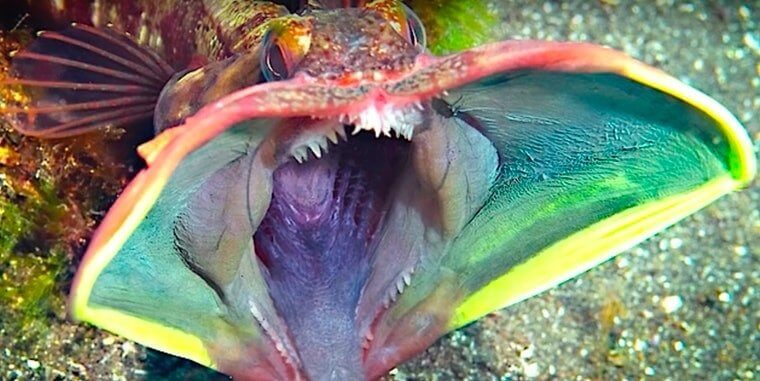
When two Sarcastic Fringeheads battle over territory, they wrestle with their open mouths as if they were kissing. This act allows them to determine which is the bigger fish, and therefore who has dominance.
Ghost Ships Sail The Wide Sargasso Sea
Located in the Atlantic Ocean, smack bang next to the Bermuda Triangle, the Sargasso Sea is the only sea in the world with no shoreline. Which is pretty weird as having shores is what defines a sea. Instead, the Sargasso is bounded by four currents that form an ocean gyre, thus creating a 2,000-mile-long "whirlpool." The area is covered by thick Sargassum seaweed and attracts pollution known as the North Atlantic garbage patch.
Christopher Columbus wrote how he feared that the seaweed, shallow waters, and a lack of wind would trap his ship. For centuries people claim to have seen long-lost, crewless ghost ships floating in the Sargasso Sea.
Jaws, Is That You?
Anyone who's seen Jaws will know this is a beast lurking inches beneath the surface is a Great White Shark, aka Carcharodon carcharias. The photo isn't the best, but the shark is about to take a fish from the net. After this photo was taken, the boat's three fishermen got drunk, sang sea shanties, and compared scars before the shark started taking chunks out of their boat. Then they blew it up with an oxygen tank.
Did you know Jaws is based on actual events when a rogue shark killed four people in New Jersey in 1916? The movie villainized sharks, and nowadays, marine conservationists estimate there are only 3,500 Great White Sharks left... the same number as tigers as n the wild.
The Edge Of The World
While this photograph seems to show water falling off the edge of the world, you'll be glad to hear it's actually an optical illusion caused by currents moving sediment at the bottom of the ocean. The trick of the eye is caused by the sudden drop off the coast of the island of Mauritius in the Indian Ocean where the ocean floor suddenly drops from 150 meters to 4,000 meters.
We know one man who'd love this place––James Cameron. As well as sinking the Titanic, the deep ocean lover also wrote and directed the 1989 movie The Abyss.
Surf's Up... And So Is Lunch!
This dude went surfing in Rockaway Beach, New York state. Everything was going swimmingly until he got home and took a look at the footage from his Go-Pro camera. Lurking beneath the murky green waves was this huge shark. And it's a good job he didn't see the shark at the time, else that last sentence would have read, "Lurking beneath the murky brown waves was this huge shark."
It's enough to put you off surfing for the rest of your life, right? Just like Jaws 4: The Revenge––the one where the shark eats Michael Caine's helicopter––was enough to put you off movies for life!
This Spooky Sign Outside An Underwater Cave
Staying in Florida now. If being underwater wasn't scary enough, Eagle’s Nest Sinkhole doubles down on the fear factor with this sign featuring the Grim Reaper surrounded by the skeletons of dead divers. The underwater cave, near Weeki Wachee, plunges 300 feet and stretches for one mile. It's also so dangerous, it's known as the “Mount Everest” of cave dives. Its dark, narrow, connecting nooks and crannies attract loads of interesting translucent marine life.
Vice-chairman of the National Speleological Society’s Cave Diving Section, Sylvester Muller, says, “It’s like a Venus flytrap ... You get in there, and there is so much to see you get distracted, and it gets deep quickly.”
Grandpa, Is That You?
Sharks are one thing, but the real horrors of the deep are much more other-worldly. Dive down to Davy Jones' Locker, and you'll encounter creatures like this spooky Deep Sea Eel. At first, it looks like a cute Brontosaurus but check out the front of its face, and it looks like an old man crossed with the worm from the Alien film Prometheus. Those things that look like nostrils are actually its eyes.
Whatever it is––dinosaur, alien, or a distant family member (because remember, we share DNA with this thing!)––this monstrosity is definitely enough to make you soil your wet suit!
Mom! Something Just Touched My Leg!
Even in shallow water, unseen things can swim beneath you and freak you out. For example, here's a Stingray or perhaps a Manta Ray swimming past someone and brushing their leg. You can almost hear them scream to their mom above the water. Despite their name, Stingrays aren't too dangerous. They would rather flee but can use their barbed, venomous tail to attack if they are disturbed or accidentally stepped on.
Australian zookeeper and conservationist Steve Irwin was killed when a Stingray's barbed tail penetrated his heart in 2006. But rest assured, this was a one-in-a-million encounter.
Having A Whale Of A Time
This photo isn't as terrifying as some other entries for two reasons. Firstly, we're safely above the surface, and secondly, whales are not dangerous. What is scary is the sheer size of the creature... which could be a Right Whale. The kite is about the size of its tail, while the kiteboarder is tiny in comparison. The human has no idea what's beneath them. Like they say, ignorance is bliss!
Did you know that one kiteboarder in San Francisco literally bumped into a Humpback Whale? Another kiteboarder in Adelaide, South Australia, was arrested and charged with the "molestation of a protected animal" after getting too close to a whale and her calf.
We're Gonna Need A Bigger Boat
These brave cops from the South Australia Police Force are out patrolling the shores of Tapley Shoal, about nine miles east of Edithburgh, to keep people safe. Although, that tiny motorized rubber dinghy won't last five seconds against a Great White Shark! In fact, this shark is known to the cops as 'Noah'... which is unusual, as we thought everyone in Australia was called Bruce!
Funnily enough, even though Jaws was set in and around Cape Cod, USA, Steven Spielberg and his cast and crew affectionately called their mechanical shark Bruce... so he must have been an Aussie.
What's That Lurking In The Distance?
You might think you are safe from this blurry outline in the distance, but this shark has got you exactly where it wants you. In fact, it's probably laughing to itself like a Bond villain. Mwuhaha! Sharks, you see, have a keen sense of sight and smell––they are attracted by the sight of flailing animals, keep a look out for fish’s glinting scales, and can detect blood in the water from miles away.
Unchanged for 400 million years, sharks are the ultimate predator. They can also hear low-frequency, irregular sounds, like those made by a struggling fish.... or bad swimmers like you and us!
The Flower Garden Banks National Marine Sanctuary
The Flower Garden Banks National Marine Sanctuary lies in the northwestern Gulf of Mexico, off Texas and Louisiana, and contains beautiful coral reefs. Surprisingly, one of the best sites to dive is the High Island A-389A Oil and Gas Production Platform. Over the years, the giant oil rig's legs have become a man-made reef covered with colorful sponges, hydroids, and barnacles. Sounds as lovely as the name Flower Garden Banks, right? Well, there's also a downside.
The huge metal structure will dwarf you. Hundreds of meters underwater. Breathing compressed air through a tube. One hundred miles from land. Wishing you were dead. But don't worry; if we keep plundering the earth for oil and gas, we'll all be dead soon anyway!
The Oldest Underwater Portrait Ever Taken
The first underwater photo was taken in 1856, but it's just a murky shot of some seaweed and rocks. However, this portrait of Romanian oceanographer and marine biologist Emil Racovitza was taken by Louis Marie Auguste Boutan in Banyuls-sur-Mer in the South of France in 1899. Boutan successfully developed an underwater camera with a welded metal frame in 1893 but could only take this photo after he'd finalized his waterproof flash photography rig.
If modern scuba diving isn't scary enough, imagine being a deep-sea diver 120 years ago! You'd breathe through a tube going all the way up to the surface and, if anything went wrong, you didn't have a chance in hell of swimming to safety in those lead boots!
We All Live In A Yellow Submarine
Is it a Beluga Whale? No, it's a submarine, but unfortunately, that diver isn't Ringo Starr from The Beatles. The sub is the USS Woodrow Wilson, a nuclear-powered ballistic missile submarine named after the 28th President of the United States. She was launched in February 1963 by Miss Eleanor Axson Sayre (Wilson's granddaughter) and decommissioned in 1994. In this photo, a Navy SEAL diver enters and exits the vessel off the coast of Puerto Rico.
We've seen plenty of scary diving pictures, but once you get inside a submarine, it's just as panic-inducing! Can you imagine anything worse than being trapped a mile underwater in a nuclear-powered tin bean can?
One Of The Queen Mary's Propellors
To add to your thalassophobia, submechanophobia is the fear of submerged man-made objects. So, here's a propellor of The RMS Queen Mary. Her propellers were the heaviest ever made, weighing 55 tons each and measuring 18 feet across! The British ocean liner sailed the North Atlantic between 1936 and 1967 before being retired to Long Beach, California, where she remains permanently moored. She opened her doors as a tourist attraction in 1971.
The good news is that you don't even have to get wet to see the Queen Mary's propellers. You can look down from inside the ship on the massive propellor. Yes, reassuringly, the Queen Mary has a giant viewing hole in her hull. Enter at your peril!
What's The Russian Word For Shark?
This Imperial Russian Navy submarine is called the Akula. She was built in 1908, and in 1912, she made the world's first multi-torpedo volley as she served in the Baltic Fleet during World War I. Unfortunately, the Akula sank in November 1915 after she hit a naval mine, killing all 35 crew members. Nowadays, she lies 100 feet (30 meters) on the bottom of the Baltic Sea near Hiiumaa, Estonia's second-largest island.
Akula happens to be the Russian word for shark. So if you suffer from a fear of the water and all the things in it, this sunken submarine is a double whammy!
See Ya Later, Alligator
This sea of alligator eyes shining at dusk is enough to give anyone nightmares. Accidentally stumble into this swamp, and one or more owners of one pair of those eyes will bite down on you with 2,125 lbs. per square inch of force. If losing your arms, legs, and your head doesn't kill you, you'll be sure to drown as alligators drag you underwater for a merry underwater dance called a “death roll.”
Think you can outswim an alligator? Think again, these prehistoric beasts can swim up to 20 miles per hour. In essence, if you fall into alligator-infested waters, it's a case of see you later, alligator!
Just Popped Up To Say Hello
This colossal Whale Shark breached the surface of the water and gave these seafarers more than they bargained for when they were out sailing in Papua West. But there's actually no need to worry. While these magnificent creatures are the biggest fish in the ocean, they are harmless to humans and docile enough that divers often swim alongside them, petting them. They open their massive mouths to feed on plankton––the whales, not the divers.
So, are they sharks or whales? Well, they are in fact sharks. They just earned the name “whale” because of their huge size. They can grow up to 59 feet (18 meters) and weigh 15 tons!
Three Phobias For The Price Of One!
Ladies and gentlemen, boys and girls... roll up, roll up! If this photo doesn't trigger your thalassophobia, it will definitely trigger your claustrophobia. And finally, if it doesn't trigger your claustrophobia, it's bound to trigger your speluncaphobia! That's the fear of caves. Yes, folks.. that's three phobias for the price of one admission. And if you aren't triggered by at least one, we guarantee your money back!
Seriously, though... why would anyone put themselves through this? If you're lucky enough to make it out of an underwater cave alive, then you've got the sharks, sea snakes, saltwater crocodiles, and jellyfish to deal with!
Christ Of The Abyss
So, you've finally overcome your fear of the water and head out on your first deep-sea dive only to be confronted by a statue of Jesus Christ at the bottom of the Mediterranean Sea. To make matters worse, he's screaming at you! This bronze statue of Jesus Christ was sculpted by Guido Galletti and dropped off the coast of Italy in 1954. It was removed for cleaning in 2003 before being returned.
Titled “Christ of the Abyss,” this truly haunting figure has become a popular tourist attraction. So if you want to scare the bejesus out of yourself, you can visit him in the Italian Riviera. He's open 24 hours a day.
Japanese Jellyfish
Just look at this giant, freaky Nomura’s jellyfish. They are not just creepy as hell; they are also really dangerous to humans. The sting from their tentacles is excruciating and can even kill you. These invasive species have been causing havoc to fisheries in Japan for decades. Researchers have found a number of solutions, like grinding them up to make fertilizer or turning them into ice cream. Yum!
So, if you want to avoid these Lovecraftian horrors of the deep, don't go diving in Japan. Better still, to avoid all of these spine-chilling creatures, you better stay safely on terra firma by never leaving your couch again... and eating jellyfish ice cream!

